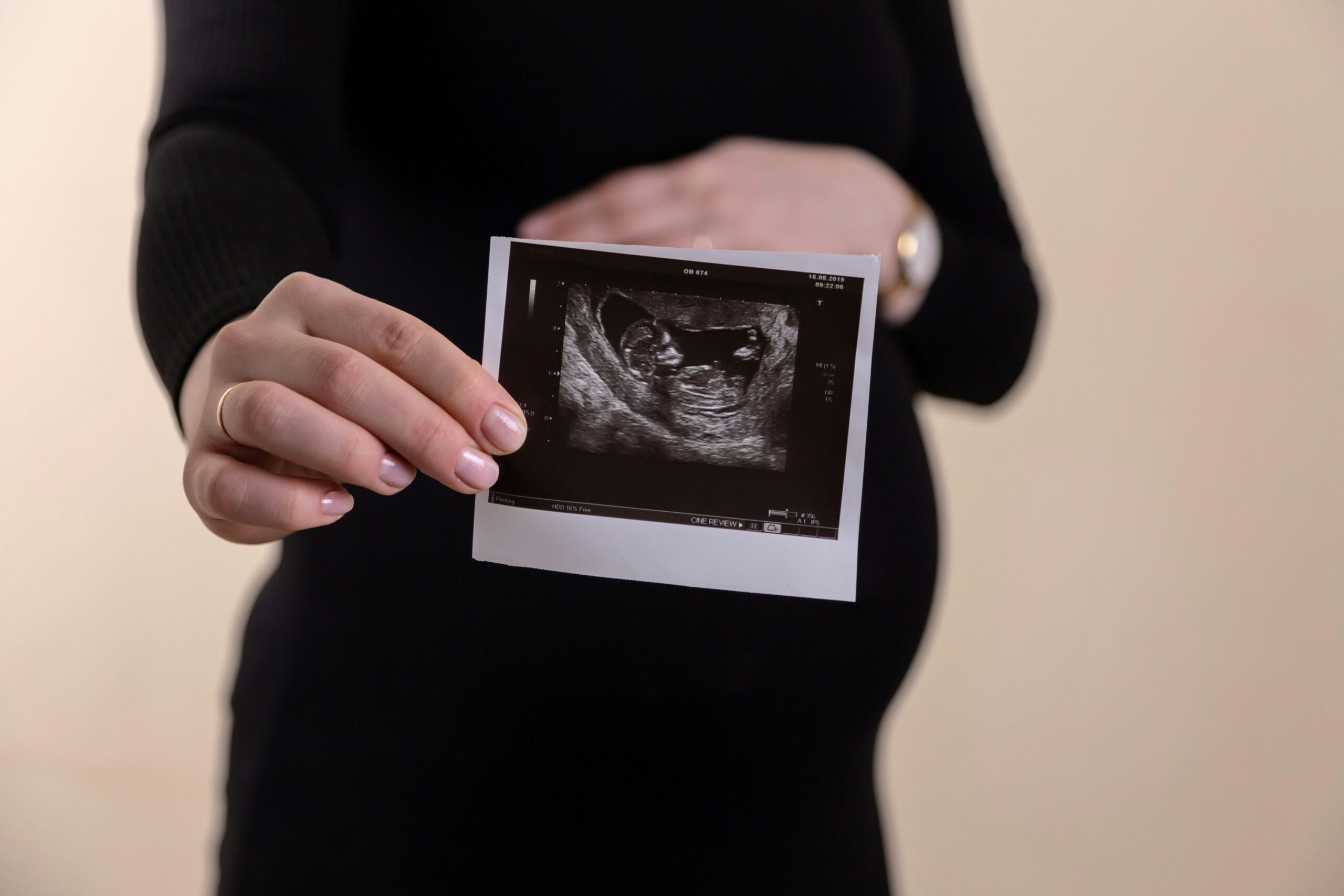Miscarriage, or the loss of a pregnancy within the first 20 weeks, is a traumatic experience that can manifest in a myriad of ways. While some people might go through intense cramping and vaginal bleeding, others may notice only mild spotting. “And, shockingly, some women may not exhibit any signs at all until an ultrasound reveals the absence of a heartbeat,” says Dr. Natalie Stentz, double-board certified OB/GYN and fertility doctor in Ann Arbor, Michigan. This is something known as a silent miscarriage—or when you miscarry without bleeding or any of the typical “signs.”
Various medical terms are used to describe miscarriage, reflecting the diverse situations women may encounter. The formal medical term for miscarriage is “spontaneous abortion,” signifying the unplanned cessation of a pregnancy, Dr. Stentz adds.
Most miscarriages happen during the first trimester—the first 13 weeks—of pregnancy, according to the Mayo Clinic. And about 10 to 20 percent of women who learn they are pregnant will have an early miscarriage—within the first several weeks of learning that they are pregnant.
This article will define what an early miscarriage is, the different types of miscarriages, early signs of a miscarriage and symptoms, as well as what to do if you expect you might be miscarrying.
What is an early miscarriage?
In medical terms, early miscarriage is called an early pregnancy failure and it refers to pregnancy loss prior to 13 completed weeks of pregnancy, Dr. Stentz says. Almost all early miscarriages are due to circumstances beyond anyone’s control. As many as two-thirds of all miscarriages can be attributed to chromosomal abnormalities. “In general, these pregnancies represent human biological inefficiency in reproduction and never would have resulted in an ongoing pregnancy or live birth,” Dr. Stentz says. “While, obviously, devastating, it can be somewhat comforting to know that a majority of early pregnancy loss is attributed to genetics and there is nothing that you could have done to change the outcome.”
Types of miscarriages
There are several different types of miscarriages. Here is a look at some of the most common types of miscarriages.
Threatened miscarriage
If you experience bleeding or cramping in early pregnancy, you might be diagnosed with a “threatened abortion,” indicating concern for potential pregnancy loss. A doctor is unsure whether the bleeding will result in a miscarriage or not. Many pregnant people experience vaginal bleeding or mild cramping during pregnancy. According to the Cleveland Clinic, about 15% to 20% of all pregnancies before 20 weeks experience a threatened miscarriage. It doesn’t always indicate a problem and in many cases, you will end up having a healthy pregnancy.
Complete miscarriage
A complete miscarriage occurs when the entire pregnancy passes from the uterus, according to the Mayo Clinic. This means the miscarriage has fully concluded. There is typically bleeding and cramping involved. A doctor can verify a complete miscarriage through an ultrasound.
Incomplete miscarriage
During an incomplete miscarriage, the pregnancy is miscarrying, but only some of the pregnancy tissue passes. The tissue that is still in the uterus might pass on its own, but if it doesn’t, emergency treatment might be needed, especially if there is heavy vaginal bleeding. You can use medicines to cause the rest of the tissue to pass or simply wait for the rest of the tissue to pass from the uterus, UC Davis Health says.
Incomplete miscarriage is a pregnancy loss in progress where products of conception may still remain within the uterus. Oftentimes the body resolves this naturally through cramping and passing tissue, however, sometimes medical intervention is necessary, Dr. Stentz says. This can include medication or surgical intervention such as a D&C.
Anembryonic Gestation
With anembryonic gestation, also known as a blighted ovum, the pregnancy is implanted but the embryonic tissue never developed or started to develop and then stopped. It does not grow into an embryo. “The gestational sac and placental tissues start to grow, but on ultrasound, only an empty gestational sac will be seen without an embryo,” Dr. Stentz says.
Embryonic or Fetal Demise
With this type of miscarriage, the early embryo or fetus stops developing and growing. Embryonic demise is when an embryo has formed in a pregnancy, but it stops growing early in development. It is often diagnosed by ultrasound by the absence of cardiac activity or stopped fetal growth. Intrauterine fetal demise (IUFD or stillbirth) occurs when a fetus dies within the uterus at or after 20 weeks of gestation, Dr. Stentz says.
Septic Miscarriage
A septic abortion or septic miscarriage refers to a pregnancy loss accompanied by intrauterine infection. This is a serious condition that requires prompt removal of infected tissue (typically via D&C) and often supportive treatment with antibiotics and fluids, Dr. Stentz says. Someone who is going through this type of miscarriage will usually have a fever, abdominal pain, and there might be bleeding and discharge with a foul odor.
Early signs of a miscarriage
Some typical symptoms of an early miscarriage include bleeding, which may contain a brown discharge or bright red blood or clots; abdominal pain or cramping; pregnancy symptoms going away; and dizziness or feeling faint.
The usual course of a complete miscarriage starts with light spotting and cramping, progressing to heavier bleeding and increased cramping, and eventually leading to the expulsion of clots and pregnancy tissue, Dr. Stentz says. After this process, the cramping significantly diminishes. At this stage, the pregnancy tissue often appears beige, shiny, and somewhat bubbly. “It’s noteworthy that up to around 12 weeks, the miscarriage tissue usually does not exhibit any recognizable features resembling a fetus,” she adds.
Some people have painful cramping, while others have cramps similar to their menstrual period. The type of miscarriage you have may also affect your pain level. If you have a complete miscarriage at home, you may have more pain than a person who has a missed miscarriage and a surgical procedure to remove the pregnancy, according to the Cleveland Clinic.
What to do if suspect you’re miscarrying
If someone suspects they are miscarrying, they should seek medical attention. “Unfortunately, there is no medical intervention to prevent a miscarriage once it has started,” Dr. Stentz says. “Usually, only heavy bleeding warrants a visit to the emergency room.” Also, if the bleeding isn’t coupled with severe symptoms such as dizziness, a racing heart, or a risk of passing out, there is usually no need to go to the Emergency Room.
“Unfortunately, emergency rooms frequently lack the resources to offer essential emotional support and medical counseling for pregnancy loss management, which can contribute to heightened psychological trauma,” Stenz says. “I always recommend reaching out to your OB or midwife as soon as possible during office hours to arrange an appointment for an ultrasound to evaluate the situation and consider RhoGAM if you have an Rh-negative blood type.”
During your visit with your doctor, they might perform an ultrasound. This will check for a fetal heartbeat or the presence of a yolk sac, which is one of the first fetal structures, according to the Cleveland Clinic. A blood test can also be performed to measure the human chorionic gonadotropin (hCG), which is a hormone produced by the placenta. If your hCG levels are low, that would confirm a miscarriage. A doctor might also perform a pelvic exam.
If you miscarry, remember you are not alone. Many people have experienced what you have gone through and can offer support and comfort during this difficult time. Talk to your doctor about potential resources in your area. And the most important thing to remember is that this is not your fault. A miscarriage is not a result of something you did or did not do.
The Miscarriage Movement sets out to shift the narrative on miscarriage, bringing research-backed information, first-person stories and comforting resources to parents coping with loss.





